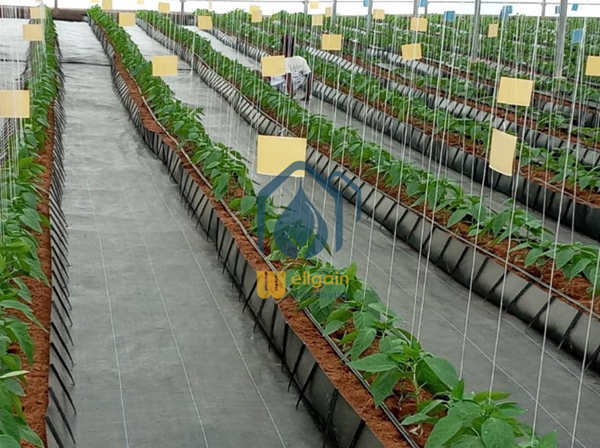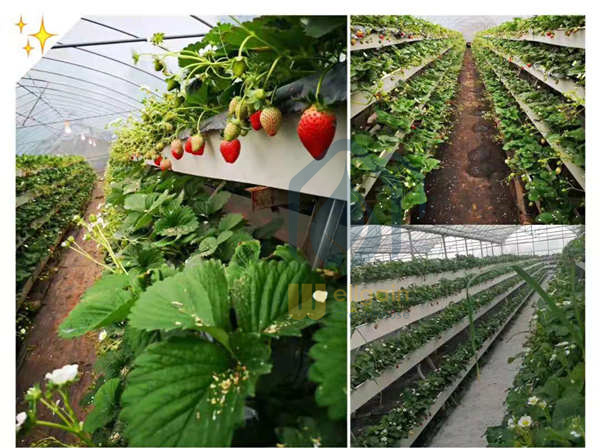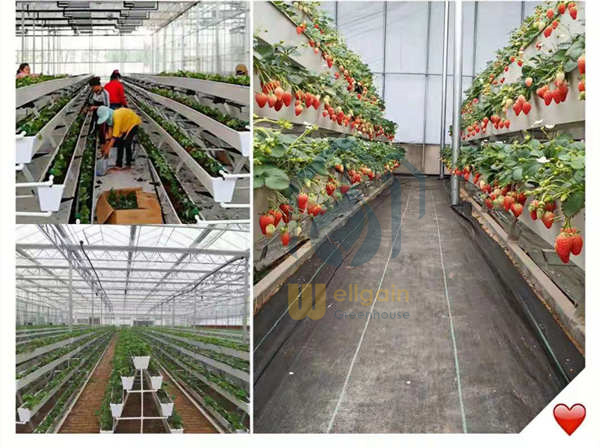How to solve the greenhouse film dripping problem
The problem of dripping from the greenhouse film is solved with two tricks:
Dripping water in the greenhouse is often encountered in winter. Sometimes it is like a light rain in the greenhouse, dripping everywhere, if it drips on the plants, it will cause a variety of diseases. The greenhouse film dripping creates conditions for pests and diseases.
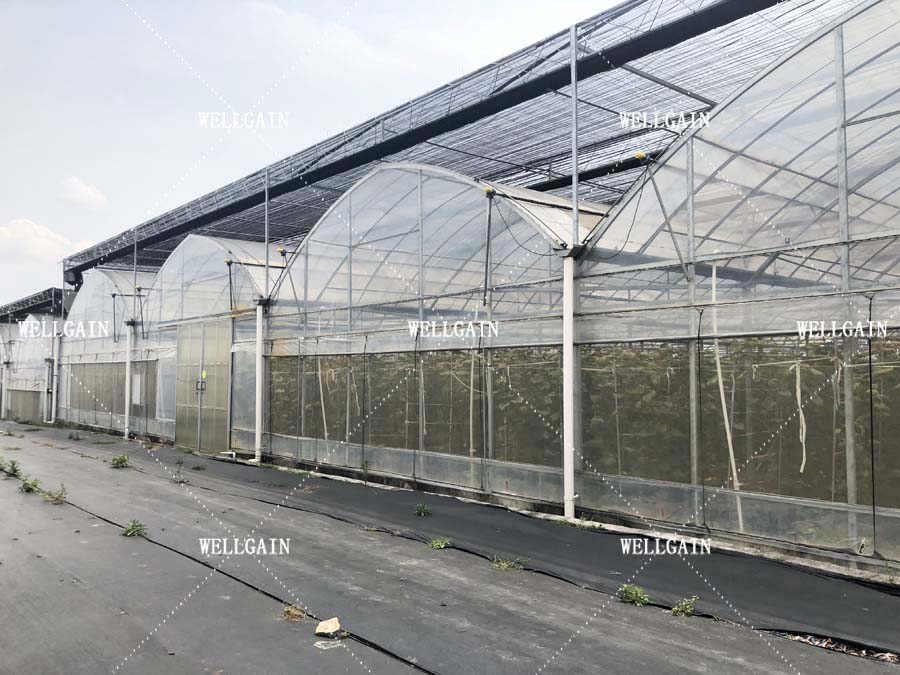
In addition, the condensation of water in the greenhouse increases the humidity inside the greenhouse, which is also conducive to the occurrence of most moisture-loving diseases. Especially in continuous cloudy weather, the temperature in the shed is low and the humidity is high. Condensation reduces the light transmittance of the film by 20% to 30%, and absorbs a large amount of heat in the greenhouse, which increases the temperature in the greenhouse.
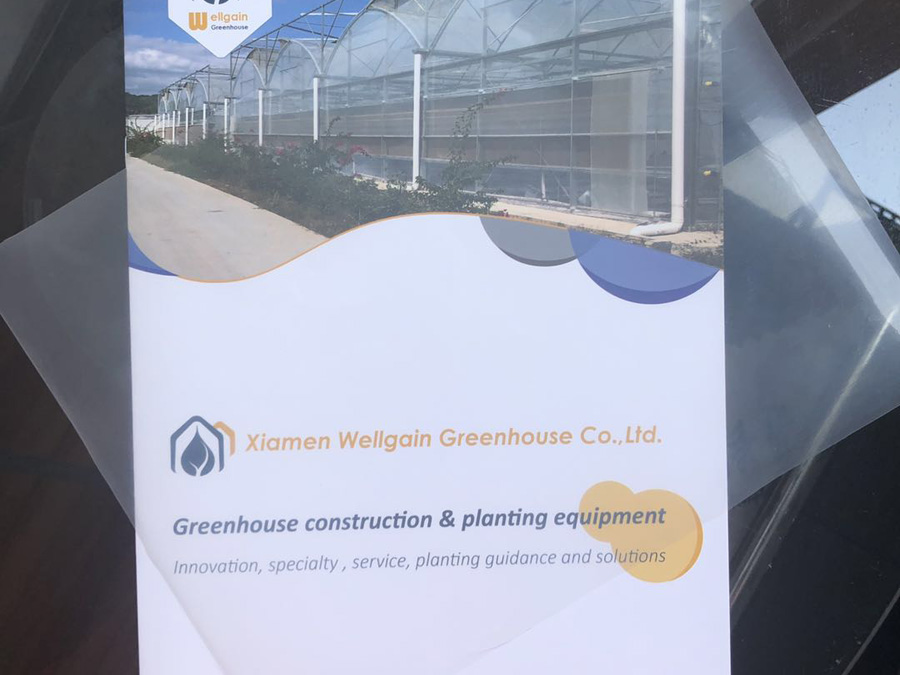
1. Use non-drip film
It is recommended to use high-quality non-drip film. Although the one-time investment on the film increases, there is less dripping, less humidity, less disease, less spraying, high vegetable yield, good quality, and higher returns.
Our company provides polytunnel film with permanent anti-fog and anti-drip function, which can solve the short time problem of PE film anti-drip function.
2. Spray silicone
Silicone is a kind of spreading agent, the water on the canopy film will slide down after encountering it, and will not condense into water droplets, so that there is no raindrop.
Recommend 2 cultivation troughs
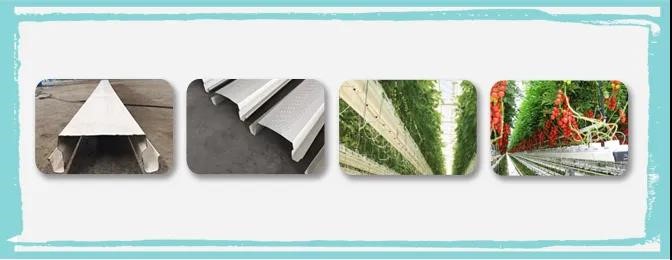
The cultivation tank for the greenhouse is supported or hung on the ground to ensure ventilation between the crops. Different heights can also provide a good environment for the planting operation of workers. At the same time, excess water and fertilizer are returned through the tanks on both sides to achieve the purpose of water and fertilizer recycling, and ultimately improve plant yield and quality

The cultivation tank adopts cold-formed industry to extrude the fluorocarbon sprayed steel plate into a linear groove shape, the thickness is generally 0.6mm or 0.7mm, the forming width is greater than 210mm, and the length can be customized. It has the characteristics of high processing efficiency, high weather resistance, prevention of nutrient solution erosion, etc., can keep the trace elements of the irrigation water source pure, has a long service life, effectively saves the planting area and is easy to operate.
What should be paid attention to when choosing a cultivation trough?
1. Grasp the structure of the greenhouse itself. Choose the right length. Reasonably plan and arrange the layout of the greenhouse planting trough to maximize the planting area.
2. The choice of the size and shape of the cultivation tank depends on the ease of operation between different crops.
3. Choose a cultivation box with no joints to avoid water leakage when the drainage groove is connected.
4. Choose a cultivation tank with good drainage effect and not easy to be blocked. Save more time and cost.
5. Good anti-corrosion performance and high strength are also key factors to ensure the service life of the planting tank
With the rapid development of facility gardening, intelligent greenhouses (usually referred to as smart greenhouses or modern greenhouses) have emerged. It is an advanced type of facility agriculture and has a comprehensive environmental control system that can directly adjust indoor temperature and light. Many factors, such as water, fertilizer, gas, etc., can achieve high-yield, steadily fine vegetables and flowers throughout the year with good economic benefits.
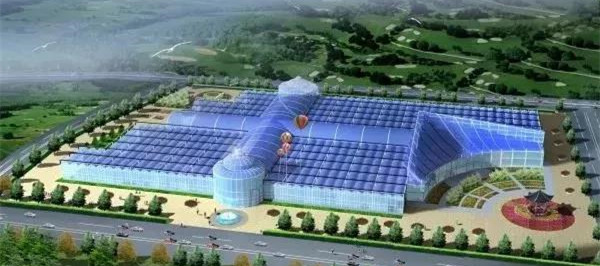
What is intelligent greenhouse?
Smart greenhouses are also called automated greenhouses. They are equipped with computer-controlled movable skylights, shading systems, heat preservation, wet curtains/fan cooling systems, sprinkler irrigation systems or drip irrigation systems, mobile seedbeds and other automated facilities, based on the agricultural greenhouse environment High-tech "smart" greenhouse. The control of the intelligent greenhouse generally consists of three parts: a signal acquisition system, a central computer, and a control system.
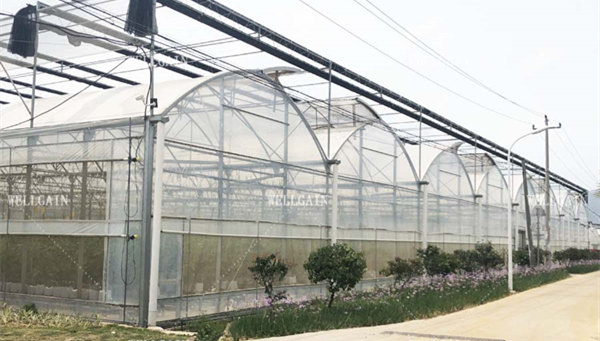
The advantage of the intelligent greenhouse is that it can realize production all year round, is not affected by the climate environment, and can realize intelligent management and control.
The smart greenhouse is equipped with a variety of climate control systems:
The external shading system can block ultraviolet rays and sunlight for the greenhouse.
The internal shading system can effectively block ultraviolet rays from entering the greenhouse, and at the same time can slow the loss of heat inside the greenhouse.
There are also facilities such as a wet curtain fan cooling system, a natural ventilation system, and an intelligent mobile sprinkler irrigation machine inside the smart greenhouse. The entire crop production process can greatly reduce the labor input and achieve efficient production.
A smart agricultural Internet of Things system is installed inside the greenhouse. This system can monitor and control various supporting systems in the greenhouse through a mobile phone and a computer, and can see the environment in the greenhouse in real time. Then it issued instructions to realize the opening and closing of the greenhouse, ventilation and cooling, supplementary lighting, soil moisture, irrigation and fertilization, etc., to provide a suitable growth environment for crops.
Main material of the PP Hydroponics Growing Trough : PP (polypropylene), and a certain proportion of PE and anti-UV agents are added.
PP English name: Polypropylene, a food packaging grade material, non-toxic, no mechanical impurities.
It is a high-density, non-side chain linear polymer with excellent comprehensive properties.
PP uses high-purity propylene as the main raw material and ethylene as the comonomer. It uses a highly active catalyst to produce polypropylene powder through a gas-phase reaction at a pressure of 62℃~80℃ and below 4.0MPa and then is dried, mixed, and extruded. Pressing, granulating, sieving, and homogenizing into polypropylene granules.
The density is 0.90 g/cm3~0.92g/cm3, which is one of the lightest general-purpose plastic materials.
Polypropylene resin has excellent mechanical properties and heat resistance, as well as excellent chemical stability.
It does not absorb water, has no effect on contact with most chemicals, and is corrosion-resistant.
Adding a certain proportion of PE (polyethylene) is mainly to increase the toughness of the PP Growing Trough For Tomato.
The main purpose of adding anti-UV agents is to increase the aging performance of the PP trough.
The thickness of the PP Coconut chaff trough drainage collection system is about 0.75mm, and the middle width and the height of both sides are produced according to requirements.
During the installation and operation of the PP trough, the ambient temperature is generally required to be above 15℃, and the normal use temperature range after installation is 0℃~75℃.
The normal service life of the pp trough is 5 years (without external damage factors).
Smart agriculture is an important manifestation of agricultural modernization and one of the development directions of modern agriculture. It is a huge monitoring, analysis, decision-making and service system of modern agriculture. Smart agriculture is the application of Internet of Things technology to traditional agriculture, using sensors and software to control agricultural production through mobile or computer platforms, making traditional agriculture more “smart”. In a broad sense, smart agriculture also includes agricultural e-commerce, food traceability and anti-counterfeiting, agricultural leisure tourism, and agricultural information services.
Smart agriculture is an advanced stage of agricultural production. It integrates emerging Internet, mobile Internet, cloud computing and Internet of Things technologies. It relies on various sensor nodes (environmental temperature and humidity, soil moisture, carbon dioxide, image Etc.) and wireless communication networks to realize the intelligent perception, intelligent early warning, intelligent decision-making, intelligent analysis, and online guidance of experts in the agricultural production environment, and provide accurate planting, visual management, and intelligent decision-making for agricultural production.
1. Types and characteristics of horticultural ground cloth
Gardening ground cloth is a kind of cloth-like material woven from UV-resistant PP (polypropylene) flat yarn. According to its color, it can be divided into black and white. According to its use environment, it can be divided into two types: internal use and external use. kind. The main characteristics of the horticultural ground cloth is to have a certain woven structure (to ensure its water permeability) and color (non-transparent), and the material should have a certain degree of wear resistance, UV resistance and mildew resistance. For outdoor ground cloth , Its strength should also be able to prevent insects and small and medium-sized animals.
2. The role of horticultural ground cloth
2.1 Prevent weeds on the ground. Because the ground cloth can prevent the direct sunlight on the ground (especially the black ground cloth), and at the same time, the strong structure of the ground cloth itself prevents weeds from passing through the ground cloth, thus ensuring the inhibitory effect of the ground cloth on the growth of weeds.
2.2 Remove water on the ground in time and keep the ground clean. The drainage performance of the ground cloth guarantees the rapid drainage of water on the ground, and the pebble layer and middle sand layer under the ground cloth can effectively inhibit the infiltration of soil particles, thus ensuring the cleanliness of the ground cloth surface.
2.3 Conducive to the growth of plant roots and prevent root rot. This effect also originates from the woven laying structure of the ground cloth, which can ensure that no water is generated in the roots of the crops, so that the air at the roots has a certain fluidity, thereby preventing root rot.
2.4 Prevent the extra growth of the roots of potted flowers and improve the quality of potted flowers. When the potted flowers are produced on the ground cloth, the ground cloth can prevent the roots of the crops in the pot from passing through the bottom of the pot and digging into the ground, so as to ensure the quality of the potted flowers.
2.5 Conducive to cultivation management: most of the ground cloth is woven with one-way or two-way marking lines. When placing flower pots or arranging cultivation substrates in the greenhouse or outdoors, you can accurately arrange them according to these marking lines.
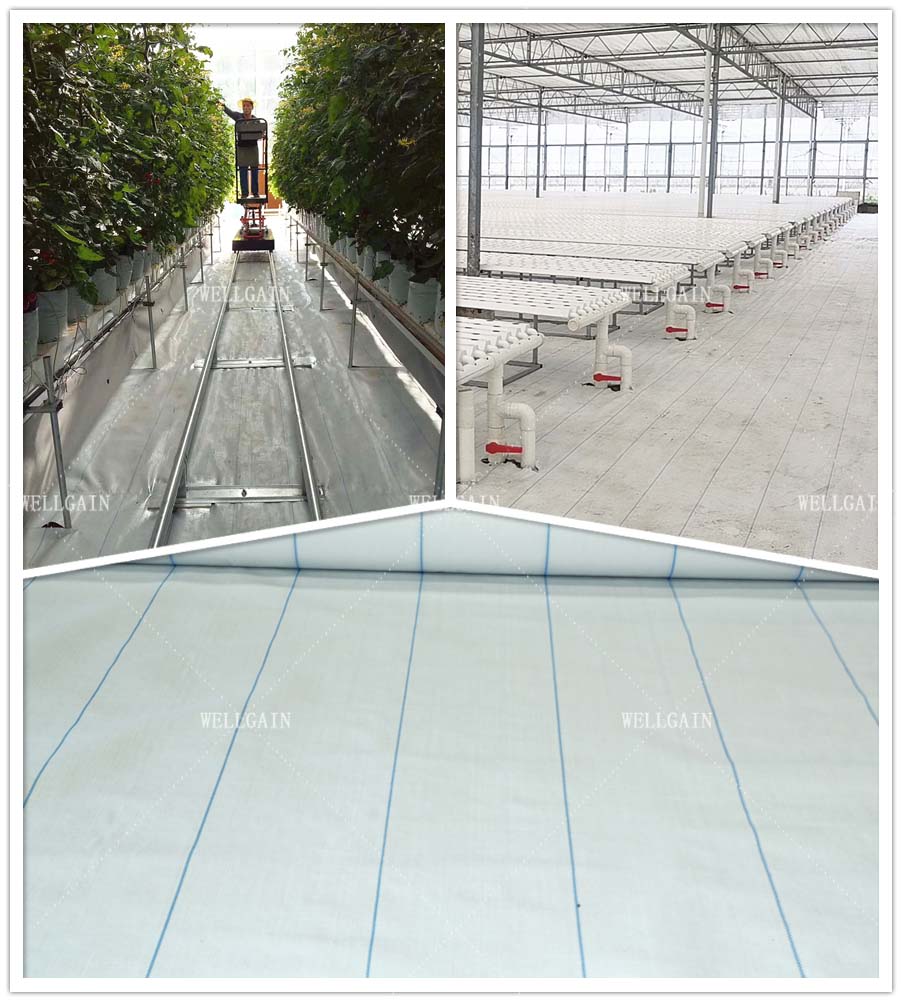
1. Greenhouse location
It is very important to select the location of greenhouse. When selecting the location, we should try to choose the flat plot. The groundwater level should not be too high. We should avoid the mountains and buildings that block the light. For the users of planting and breeding, we can not build the greenhouse in the polluted places. In addition, the wind resistance of the selected greenhouse should be considered in areas with strong monsoon. In general, the wind resistance of greenhouse should be above grade 8.
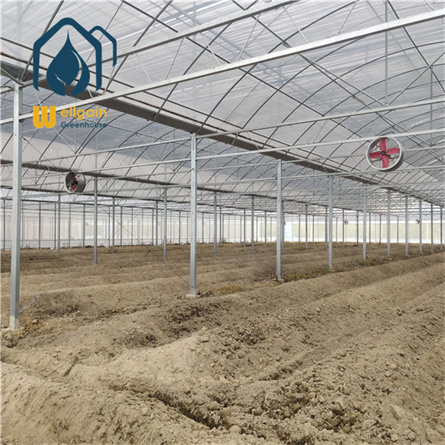
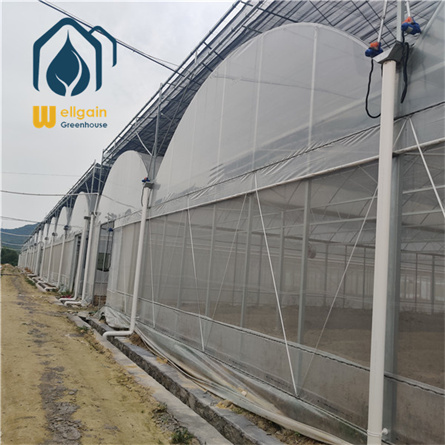
2. Orientation of greenhouse
It is suggested to choose the north-south direction of the greenhouse, that is, the mountain wall of the greenhouse is on the north and south sides, which can make the crops in the greenhouse distribute uniform light. The light transmittance in the north-south direction was 5% - 7% more than that in the east-west direction, the light distribution was uniform, and the temperature change in the greenhouse during the day was gentle. Therefore, greenhouses tend to be north-south
3. Greenhouse steel
Hot dip galvanized steel pipe is commonly used in greenhouse steel. Hot dip galvanized steel pipe is firstly pickled. In order to remove iron oxide on the surface of steel pipe, after pickling, it is cleaned in the tank with ammonium chloride or zinc chloride solution or mixed solution of ammonium chloride and zinc chloride, and then sent into the hot dip tank. Hot dip galvanizing has the advantages of uniform coating, strong adhesion, long service life and strong corrosion resistance.
4. Greenhouse covering film
PE film and Po film are commonly used. The owner who has higher requirements for drip can choose Po film. The anti drip function of Po film is consistent with the life of the film. The anti dripping function of PE film is chemical additive, which will gradually weaken after one year. The owner can also choose the film with scattering or high transmittance according to the needs.
Ebb and flow system is a kind of bottom irrigation method designed for containers or matrix blocks such as flowerpots and trays, which is suitable for fruit and vegetable seedling and cultivation.
It is mainly composed of cultivation bed, nutrient solution circulation part (supply and return pipeline, nutrient solution storage pool, circulating water pump, disinfection equipment, etc.), control part and plant cultivation carrier (substrate block or cultivation container).
When the tidal irrigation system is running, the nutrient solution overflows from the water inlet of the cultivation bed (called “rising tide”). When the liquid level reaches a certain height, the nutrient solution infiltrates the substrate from the bottom of the container and is absorbed by the capillary action of the substrate for the cultivation crops to absorb and use. When the irrigation is completed, the nutrient solution is discharged from the backwater outlet of the cultivation bed (called “ebb tide”)
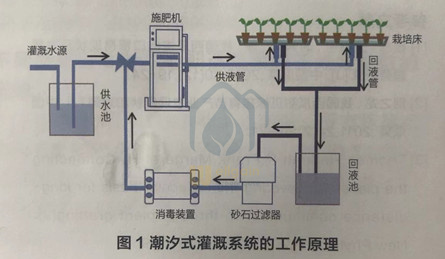
We recommend to use flat cultivation rather than A frame for NFT lettuce hydroponic in greenhouse. There are several reasons why more people choose flat cultivation:
1. The number (yield) of planting slots is actually similar. For example, for one span, you can put 48 cultivation pipes with A frame, 45 cultivation pipes with flat cultivation. Not much difference in quantity. But the price for A frame is much more expensive than flat cultivation.
2. The yield of flat cultivation is relatively stable, and the influence of light is relatively small. But for the A frame, If there is not enough light in the area, the lettuce on the lower level will not get enough light and will not grow well.
3. More convenient installation and lower transportation cost for NFT lettuce flat cultivation.
4. It is more convenient for growing and harvest with flat cultivation in the greenhouse.
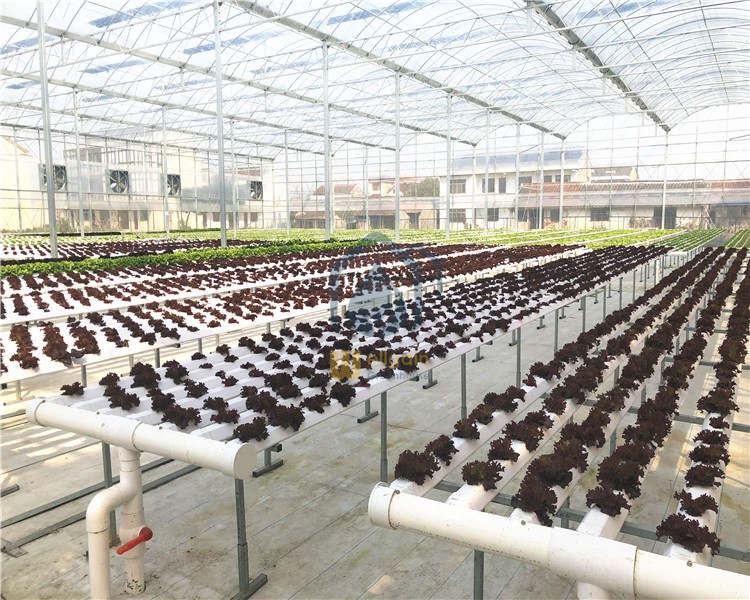
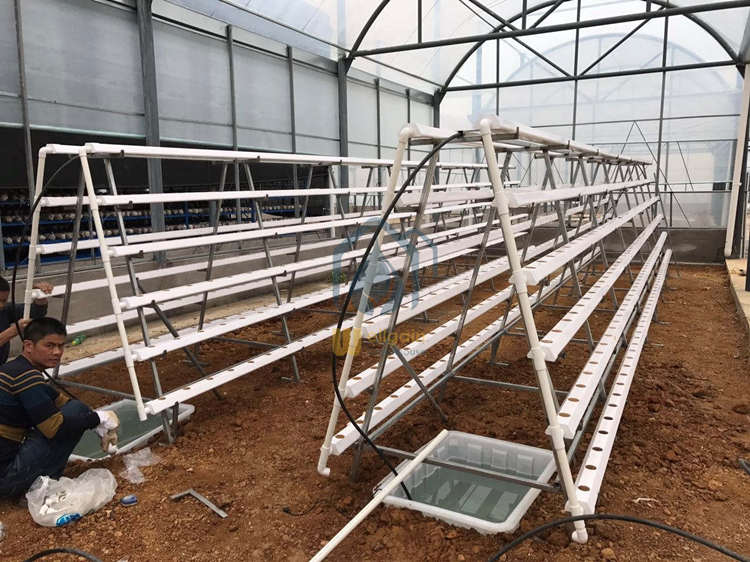
1. Control and regulation of temperature in greenhouse
The control of temperature in greenhouse should follow the principle of "high in early stage, low in late stage". In the early stage, the temperature was controlled at about 30 ℃ in the daytime and about 15C at night; During budding stage and flowering stage, the temperature was controlled at 25C in daytime and 10 ℃ at night; During the fruiting period and harvest period, the temperature was controlled at about 23C in the daytime and 7C at night. If there is continuous haze in the middle, we should pay attention to the measures of artificial heating.
2. Humidity control in greenhouse
At noon, the greenhouse needs ventilation; In case of snowy weather, greenhouse ventilation can be adopted at noon to remove moisture, and the depth of shed should be kept below 80%.
3. Treatment of mulching film and gibberellin
The black film is suitable for covering, which can increase temperature and decrease humidity. A small amount of gibberellin can be applied when strawberry plants produce two new leaves and budding stage to prevent the plants from entering dormancy. Usage and dosage of gibberellin:
The concentration was 5 ~ 10mg / L, 5ml / plant.
4. Water and fertilizer management during plant growth
After the plant growth is stable, pay attention to keep the soil matrix moist, pay attention not to water. The plants in fruiting and flowering stages need more nutrients, so topdressing can be applied properly. The usage and dosage of topdressing: n, P, K compound fertilizer 10kg / hm2, 0.4kg/plant; The fertilizer can be dissolved in water for irrigation.
5. Summary
Based on the growth habits of strawberry, it is very suitable for overwintering cultivation in greenhouse, effectively avoid the phenomenon of low temperature dormancy, improve the production efficiency of strawberry in greenhouse, so as to meet the market demand.
- Buddha Jump Over the Wall1
- Canned Abalone2
- Canned Turtle Soup1
- Edible Bird's Nest2
- Frozen Foods1
- Frozen Seafood8
- Jelly/Pudding Applications1
- Meat Product Applications2
- Others Applications5
- Plant-based meat Product Applications1
- SURIMI2
- Soft Candy1
- Soft Candy Applications4
- bottle1
- can end2
- packaging film2
- tableware3
